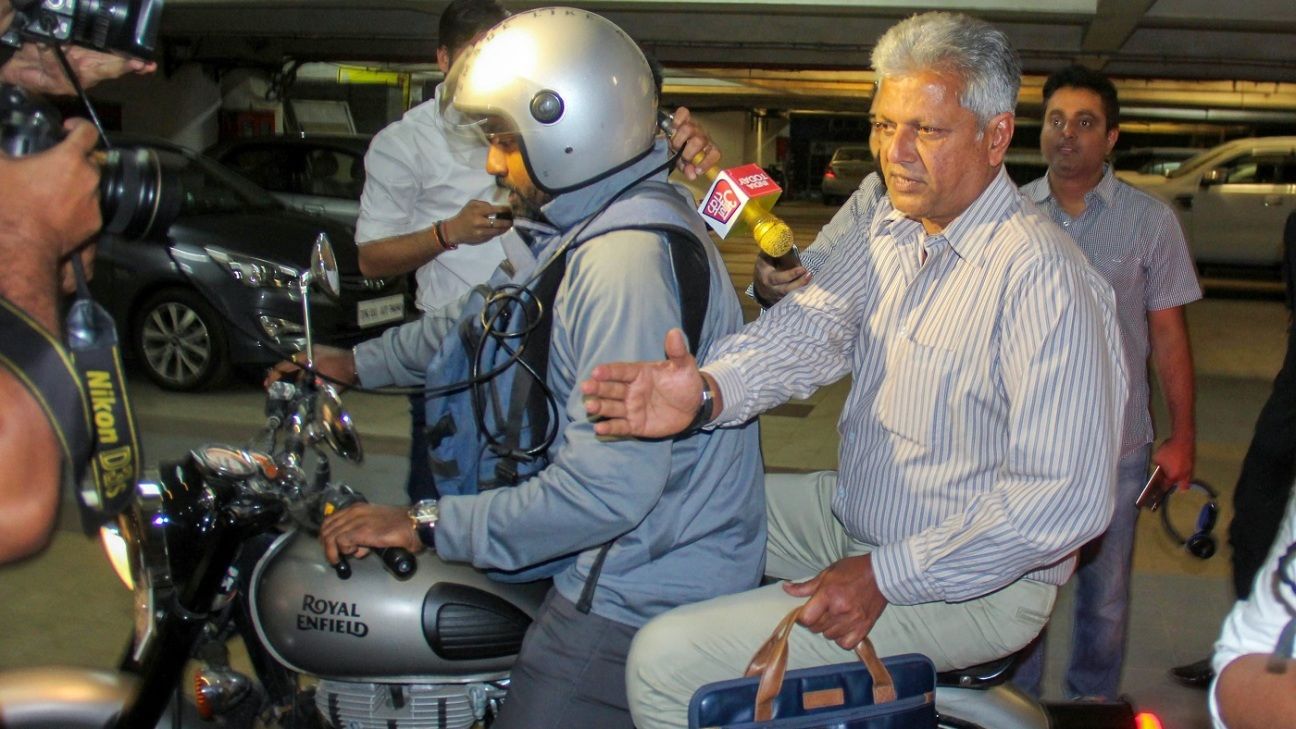After spurring a revolution in the 2017 World Cup, India women qualified for the knockouts of the Women’s World T20 for the first time in eight years. However, their progress in the Caribbean was marred by the fallout among ODI captain Mithali Raj, T20I captain Harmanpreet Kaur, and former coach Ramesh Powar. What are the challenges ahead for new coach WV Raman?
Unite and rule
Put yourself in Raman’s shoes. You apply for a vacancy that, until a month ago, didn’t exist. Then you compete with some of the most high-profile names to have ever applied for coaching any women’s team in the world. And, after a selection process replete with controversy, you are deemed the best candidate owing to your vast coaching experience and your credentials as a former batsman.
So far so good? Well, how’s this for the fun part: the team you’ll be taking over has two limited-overs captains, Mithali Raj and Harmanpreet Kaur, at loggerheads. Raj, the ODI captain and the most celebrated face of Indian women’s cricket, said she has “nothing against” her T20I counterpart, also the ODI vice-captain and among the most sought-after names in various T20 leagues across the world. But in reality, that does little to lighten the baggage of discomfort that has existed between the two for the longest time.
Their stand on the ousted coach – Powar – is as divergent as their temperaments and playing styles. And the vice-captain of the T20I side, Smriti Mandhana, who is next in line to succeed both Raj and Harmanpreet, backed her T20I captain in the hope of finding an “amicable” solution to the ugly mudslinging.
In less than a month, India leave for their limited-overs tour of New Zealand, their first international assignment since the World T20 that left the team split. A home series against England is scheduled after their return. Raman’s role will, therefore, entail far more than just being a coach. The side’s dynamics require him to be an astute reader of temperaments, a personnel manager, a leader who can cultivate a culture where there is no sense of entitlement and the skills-sets of established names and rookies are subject to the same the standards of scrutiny.
Capitalising on Powarplay
In his three-month tenure, Powar proved to be very much his own man: he tried to break the hierarchy among the players, hoping to centralise the power so the focus could solely be on leading India women to their first world title. He backed the players – both young and experienced – to play a “fearless” brand of cricket on the Sri Lanka tour. The result? They won both limited-overs series, with many young players, in particular, standing out.
His vision heading into the World T20, too, was clear: this Indian side, he said, was “about dominance rather than just competing“. It translated into India piling on the highest total in the tournament’s history, Harmanpreet matching her epochal hitting with consistency, and the spin department, led by Poonam Yadav, fetching wickets in the Powerplay.
A seven-match winning streak preluded India’s semi-final qualification, including topping the group stage on the back of beating heavyweights New Zealand and Australia. And much of it was down to Powar’s blueprint that was based on aggression and intent. As Raman tries to suss out the needs of this team, his task may get a touch easier initially, for he will be inheriting an Indian side that is familiar with Powar’s credo of delivering results.
On talking terms
Off the field, Raman may stand to benefit from the brand of professionalism Powar injected; the T20I captain, vice-captain and even the support staff, were not immune to his demand for greater efficiency and discipline. But given it backfired in one big regard, if Raman is to adopt one learning from his predecessor, and of those that coached the side just before Powar – Tushar Arothe and Purnima Rau – it is the mastery of communicating decisions to his players. That’s the one key factor that will decide the length of his stint with a team that now finds itself deeply entrenched in the off-field politics of Indian cricket.
Two-in-two and combination conundrums
One of India’s two ODI mainstays, Jhulan Goswami, is no longer part of the T20I set-up; the other, Raj, said last month that “now the team is settling”, it could have been the last World T20 for her. However, Raj has been named in the T20I squad for the New Zealand tour. With 15 months until the next world tournament – the 2020 T20 World Cup in Australia – where does the ODI captain figure in the coach and the T20I captain’s scheme of things?
In addition, who will partner Mandhana at the top in T20Is? Will the new think-tank persist with wicketkeeper-batsman Taniya Bhatia, who had a lean run as an opener in the World T20, or will Jemimah Rodrigues, a proven punt at first drop, be reunited with Mandhana? How accommodating will Raj be to playing in the middle order in the T20I side?
With direct qualification for the 2021 World Cup in New Zealand at stake, how can the young quicks Mansi Joshi, Pooja Vastrakar and Arundhati Reddy feed off the experienced Goswami? These questions aside, as far as dispute-resolution goes, perhaps Raman’s plans for the future – both tactical and managerial – may also need a look back on a not-so-distant past, when Goswami played mediator between two high-profile warring figures in the side.
Juggling multiple hats
The team has not yet been equipped with a bowling coach, despite senior players demanding one since April, when Arothe was in charge. Raman himself, it is learnt, suggested during Thursday’s interview the BCCI consider hiring one. But until that materialises, much of India’s fortunes in the next two bilateral series will depend on how he bolsters the confidence of the bowling unit, especially its spine – the spinners.
